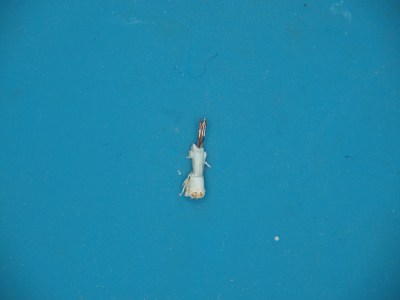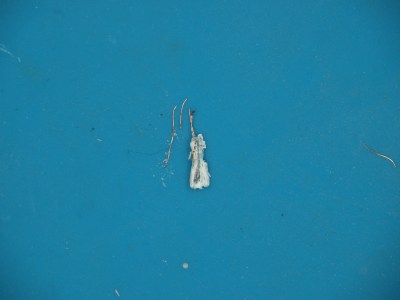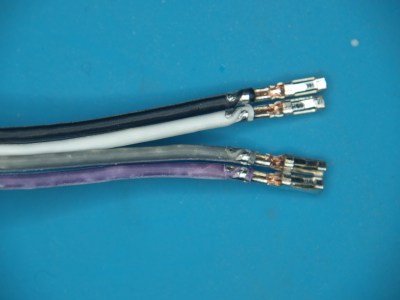That sound you may have heard in the wee hours of Christmas morning had nothing to do with Santa; rather, it was the sound of a million astronomers collectively letting out their breath around the world as the James Webb Space Telescope survived its fiery ride to space. And not only did it survive, but the ESA launch team did such a good job putting the Ariane rocket on course that NASA predicts the observatory now has enough fuel to more than double its planned ten-year mission. Everything about the deployment process seems to be going well, too, with all the operations — including the critical unfurling of the massive and delicate sunshield — coming off without a hitch. Next up: tensioning of the multiple layers of the sunshield. If you want to play along at home, NASA has a nice site set up to track where JWST is and what its current status is, including temperatures at various points on the telescope.
We got a tip from Mark about some dodgy jumper wires that we thought we should share. Low-quality jumpers aren’t really a new problem, but they can really put a damper on the fun of prototyping. The ones that Mark found could be downright dangerous. He got them with a recent dev board purchase; outwardly, they appear fine, at least at first. Upon closer inspection, though, the conductors have turned to powder inside the insulation. Even the insulation is awful, since it discolors when even slightly flexed. He suspects conductors are actually copper-plated aluminum; check out his pictures below and maybe look through your collection for similarly afflicted jumpers.
Speaking of dodgy hardware, if you love the smell of melting MOSFETs in the morning, then have we got a deal for you. It seems that a non-zero number of Asus Z690 Hero PC motherboards have suffered a fiery demise lately, stirring complaints and discontent. This led some curious types to look for the root cause, which led to the theory that an electrolytic cap had been installed with the wrong polarity on the dead boards. Asus confirmed the diagnosis, and is doing the right thing as they are “working with the relevant government agencies on a replacement program.” So if you’ve got one of these motherboards, you might want to watch the video below and see how the caps were installed.
If you’re in the mood for some engineering eye-candy, check out the latest video from Asianometry. They’ve got a finger on the pulse of the semiconductor industry, with particular attention paid to the engineering involved in making the chips we all have come to depend on. The video below goes into detail on the extreme ultraviolet (EUV) light source that fabrication machine maker ASML is developing for the next generation of chip making. The goal is to produce light with a mind-bending wavelength of only 13.5 nanometers. We won’t spoil the details, but suffice it to say that hitting microscopic droplets of tin with not one but two lasers is a bit of a challenge.
And finally, bad luck for 38 people in Tokyo who were part of a data breach by the city’s Metropolitan Police Department. Or rather, good luck since the data breach was caused by the loss of two floppy disks containing their information. The police say that there haven’t been any reports of misuse of the data yet, which is really not surprising since PCs with floppy drives are a little thin on the ground these days. You’d think that this would mean the floppies were left over from the 90s or early 2000s, but no — the police say they received the disks in December of 2019 and February of 2021. We’d love to know why they’re still using floppies for something like this, although it probably boils down to yet another case of “if it ain’t broke, don’t fix it.”



















Re: the jumpers
CCA (copper coated aluminum) is a not uncommon substitution, unfortunately. There’s nothing wrong with CCA, in and of itself, but it must be used appropriately. Gauge size must be larger than copper, and proper crimps must be used. Add that a fair bit of it comes with dead garbage insulation and mislabled as actual copper, bad things happen. I have even seen it from nominally reputable suppliers (8AWG dimensioned CCA is NOT suitable when 8AWG copper is specified for a three phase motor, esp with PVC insulation, even if it is marked “8AWG 110C THHN Cu” on the insulation, the marking being a dead clue)
The telescope has about half a year of things it has to go through before it’s ready for regular scientific use.
That wire looks more like it was totally aluminium and severely oxidized in storage before “just” the end was chemically primed and copper coated. The so called plastic is probably highly porous and allowing humidity into the conductor.
In both my past professional environment (retired now) and my hobby environment I took charge of my own QA (Quality assurance) and safety assessments.
One example would be the leads with alligator clips. I inspected one of a batch and found the wires were ok and the clips were ok but the conductor had been folded over the end of the insulation and then crimped in a kind of hit or just about missed technique. They were potentially dangerous so I cut the ends off the wires, stripped them, opened the crimps, soldered the wires and used the crimps as strain relief. I then put some heat shrink on the middle of the lead to indicate it had passed inspection so “fixed” leads could not be confused with newly purchased and not yet fixed leads.
This, except I went through every alligator clip in my collection in a furious rage after that loose connection cost me a half hour of debugging time.
All soldered and solid, or in the trash can. No in-betweens.
In my experience, many clip leads come with copper clad steel wire. The wire itself gets attracted by a magnet.
They are utterly and completely useless.
I was using them for bench testing a car radio, when i just couldn’t figure out why there was so much voltage drop somewhere. Turns out it was the wire itself that had a big resistance. Further testing showed that the wires got smoking hot at just a few amps already.
Other crocodile clips (Cu or CCA) had the same intermittent problems, but could carry a few amps without excessive heating.
I’m in the process of replacing them all. Replacing all wire with some wire taken from an old ATX power supply.
Declaring them “utterly useless” doesn’t really help. Do you suppose by uttering these words the wiring will magically go away? You should have taken the previous comment by cliff claven to heart… “CCA (copper coated aluminum) is a not uncommon substitution, unfortunately. There’s nothing wrong with CCA, in and of itself, but it must be used appropriately. Gauge size must be larger than copper, and proper crimps must be used.”
I admire engineering efforts that “gets things done”. There’s too many engineers that declare “my way is superior to all other ways!” You may actually be right, but you’ll be very lonely.
The heat shrink as a mark is a good idea. Of course I have also fixed a lot of this “1 ohm” jumper leads.
Belated comment from originator, I’m a trifle behind in my reading. The wires were supplied with a USB to Serial adapter, I bought a number of FTDI ripoffs so that I could take a good look at their labelling and behaviour. They definitely worked to start with, but degenerated over (perhaps) six months storage.
One of my photos clearly shows traces of copper inside the insulation, which by that time tended to discolour when flexed and was pretty brittle. I agree that the cause could have been moisture penetration, but suspect there was also alkali involved from degradation of the polymer or plasticiser.
So the take-home from this is: if jumper wires show discolouration when flexed, assume that the conductor might be being attacked even if so far it tests OK.
Quote [DM/HaD]: “NASA predicts the observatory now has enough fuel to more than double its planned ten-year mission”
Quote [NASA]: “Despite an ambitious science agenda, the mission was designed with just a five-year minimum lifetime — but with the observatory finally in space, NASA is confident that it will have enough fuel to see much more use than that.
“The Webb team has analyzed its initial trajectory and determined the observatory should have enough propellant to allow support of science operations in orbit for significantly more than a 10-year science lifetime,” NASA officials wrote in a statement posted Wednesday (Dec. 29).””
—
As I read it Webbs lifespan was designed to be a minimum of five years (with good hopes of stretching it up to ~10 years). Though thanks to the great work of ESA this is now estimated to be well beyond the stretch goal of 10 years. [HaD] here seems to pose that this fans out to a double of 10 years, so 20 years, which I feel is fairly (too) optimistic?!
Over a year ago I had a case of the same bad jumper wires from China. They came with an ST-Link stick.
Some of the wires had discontinuities, and the insulation discolored when bended. When I opened the insulation, it looked like there was some sort of crap inside where the strands were broken. Strangely not all strands were broken in the same place, and strands from one side were rubbing other strands from the opposite side, yet there was no electrical connection. Sadly I threw the pieces away after keeping them around for about two months.